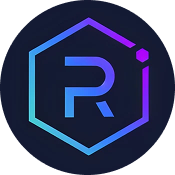When it comes to blockchain innovation, few projects exemplify the spectrum of technological advancement as vividly as Zilliqa and Aave. Zilliqa pushes the envelope on scalability with its pioneering sharding architecture, aiming to serve high-throughput applications with unprecedented efficiency. Conversely, Aave has established itself as a powerhouse in decentralized finance, offering sophisticated lending and borrowing mechanisms across multiple blockchain networks. In this comparison, we’ll explore their core architectures, use cases, and future roadmaps to help crypto enthusiasts and investors understand which platform aligns best with their strategic goals.
Short on time? Jump to Zilliqa vs Aave Comparison
Understanding Zilliqa and Aave ?
Zilliqa, launched in 2017, was the first blockchain to implement sharding technology at scale, addressing the long-standing issue of scalability that has hindered many blockchain networks. Its unique architecture allows it to process thousands of transactions per second, making it ideal for enterprise applications and decentralized services that demand high throughput. Zilliqa employs a secure smart contract language called Scilla, emphasizing formal verification and safety, which appeals to developers prioritizing security.
Aave, on the other hand, is a leading DeFi protocol that offers decentralized lending, borrowing, and asset management. Since its inception, Aave has become a dominant player, with billions of dollars in total value locked (TVL). Its platform supports multiple assets and chains, with innovative features like flash loans and liquidity pools. Aave’s recent upgrades focus on cross-chain interoperability and modular architecture, aiming to maintain its leadership in the rapidly evolving DeFi landscape.
While Zilliqa aims to revolutionize blockchain scalability and smart contract security, Aave concentrates on providing a robust and flexible DeFi ecosystem. Both projects leverage blockchain technology but target different pain points within the crypto space—Zilliqa on scalability and security, Aave on financial decentralization and liquidity.
Understanding these foundational differences sets the stage for a detailed comparison, highlighting how each platform addresses its core challenges and what innovations they bring to the table for users and developers.
Key Differences Between Zilliqa and Aave
Core Functionality
- Zilliqa: Zilliqa is primarily a scalable blockchain platform designed for high-throughput decentralized applications. Its sharding technology enables it to process thousands of transactions per second, making it suitable for enterprise-grade solutions and micro-payments. Its focus is on building a secure, scalable infrastructure that can support complex dApps and smart contracts with minimal latency.
- Aave: Aave functions as a decentralized finance (DeFi) protocol, facilitating lending, borrowing, and liquidity provision across multiple chains. Its core innovation lies in its liquidity pools, flash loans, and risk management features, which enable users to earn interest or access instant liquidity without traditional intermediaries. Aave’s emphasis is on financial flexibility and cross-chain interoperability.
Technology Stack
- Zilliqa: Zilliqa employs its proprietary Scilla smart contract language, designed for formal verification and security. Its architecture relies on sharding, where the network is divided into multiple smaller components called shards, each processing transactions independently. The upcoming Zilliqa 2.0 upgrade introduces full EVM compatibility and improved sharding mechanisms to enhance scalability and developer experience.
- Aave: Aave operates on Ethereum and other EVM-compatible chains, using Solidity as its smart contract language. Its architecture is modular, supporting integrations with various blockchains and layer-2 solutions. The recent V4 upgrade introduces a cross-chain liquidity layer and enhanced interest rate models, reflecting its focus on interoperability and efficient capital deployment.
Use Cases
- Zilliqa: Zilliqa is ideal for building scalable decentralized applications, including gaming, payments, and enterprise solutions that require high transaction throughput. Its security features and formal verification make it suitable for applications where robustness and safety are paramount.
- Aave: Aave is tailored for DeFi users seeking decentralized lending, borrowing, and asset management. Its products are used for earning yield on deposits, accessing instant liquidity through flash loans, and deploying cross-chain liquidity pools, making it a versatile tool in the DeFi ecosystem.
Future Roadmap
- Zilliqa: Zilliqa is focusing on completing its EVM compatibility, launching Zilliqa 2.0 with faster finality, better scalability, and programmable decentralization. These upgrades aim to attract more developers and enterprise clients by providing a more reliable and familiar environment.
- Aave: Aave’s future plans include expanding cross-chain functionality with V4, launching its own Aave Network, and integrating real-world assets. Its roadmap emphasizes increasing liquidity, enhancing security, and maintaining its market dominance in decentralized lending and borrowing.
Security and Governance
- Zilliqa: Zilliqa emphasizes security through its peer-reviewed language, formal verification, and robust consensus mechanisms like pBFT. Governance is community-driven, with plans to incorporate more decentralized decision-making as the network evolves.
- Aave: Aave prioritizes security via rigorous audits, bug bounties, and decentralized governance through the Aave DAO. Its upgrade proposals, like V4, involve community voting, ensuring that development aligns with user interests.
Zilliqa vs Aave Comparison
| Feature | ✅ Zilliqa | ✅ Aave |
|---|---|---|
| Main Use Case | High-throughput decentralized applications and enterprise solutions. | Decentralized lending, borrowing, and liquidity management. |
| Transaction Speed | Over 2,800 TPS (experimental results). | Dependent on the underlying chain, often seconds for transactions. |
| Smart Contract Language | Scilla, designed for formal verification. | Solidity, EVM-compatible. |
| Scalability Solution | Sharding architecture for linear scalability. | Cross-chain interoperability and modular upgrades. |
| Security Focus | Formal verification, peer-reviewed protocols. | Audits, bug bounties, decentralized governance. |
| Ideal For | Developers needing scalable, secure dApps. | DeFi users seeking flexible, cross-chain liquidity. |
Ideal For
Choose Zilliqa: Innovative developers and enterprises aiming for scalable blockchain solutions.
Choose Aave: DeFi enthusiasts and investors looking for decentralized financial services with cross-chain flexibility.
Conclusion: Zilliqa vs Aave
Zilliqa and Aave serve different yet complementary niches within the blockchain ecosystem. Zilliqa’s pioneering sharding technology addresses the critical challenge of scalability, making it a compelling platform for complex decentralized applications that require high throughput and security. Its focus on formal verification and future EVM compatibility positions it as a resilient infrastructure for enterprise and developer use cases.
Aave, on the other hand, has cemented its leadership in DeFi by offering a versatile, cross-chain lending platform that continuously innovates with features like flash loans and stablecoins. Its roadmap indicates a strong focus on interoperability and expanding real-world asset integration, ensuring its relevance in the evolving DeFi landscape. For users prioritizing financial services and liquidity management, Aave remains a top choice.






